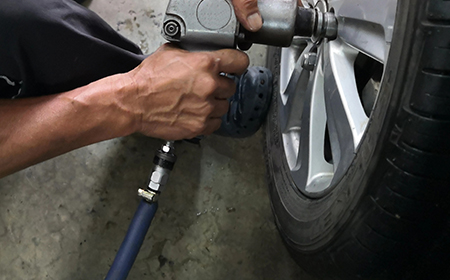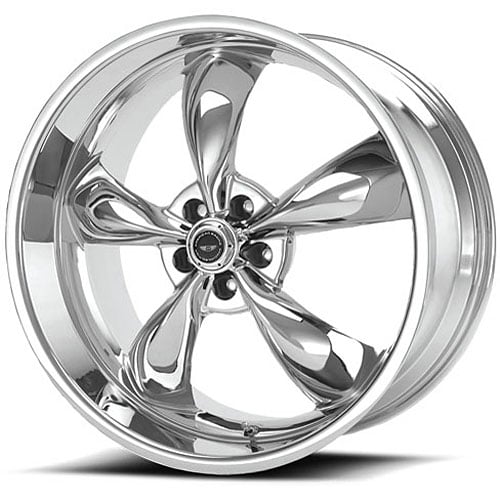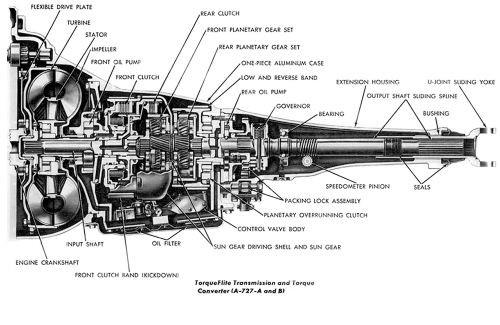How a Change in Tire Size Affects Speedometer Accuracy
When you change out your tires and wheels for a larger wheel, you always want to respect the overall diameter (OD) of the original tire. A lower profile tire must be placed on a larger wheel to keep the OD close to the same as the tire/wheel combination being replaced. You certainly never more than a 5% difference in OD to the original tire. Too large a variation could impact the gearing and correct operation of the vehicle. Also, any change in the tire OD will give you a false reading of speed and distance on your odometer.
When your vehicle was new, the speedometer was calibrated by the factory according to the exact size of the intended tires. If you change to a taller tire, the circumference of the tire will also be greater. What this means is one rotation of the tire will take you further on your new tires than on your old tires. If the speedometer was never re-calibrated with the new tires, it will register a slower speed than you are travelling. For example, if your tire was 3% taller (still within approved guidelines for plus fitments) the gearing and operation of the vehicle would be fine, however your speedometer would show 60 mph, when in fact you are traveling 63.3 mph.
An easy way to measure your speedometer accuracy it to run a road test. Freeways have mile markers that indicate the length of each mile you are traveling. The safest and most accurate way to execute this test is to have a passenger in the car with a stopwatch. Set your cruise control at 60 mph, and start the stopwatch when you pass the mile marker. It should take you 60 seconds to pass the next mile marker. Repeat the test three or four times to be sure, and average the resulting times. If your average time is off by 3 seconds or more, your speedometer is likely in need of re-calibration. If you have changed out the tire and wheel package, the OD and resulting change in revolutions per mile is likely the cause.

How a Change in Tire Size Affects Speedometer Accuracy
Since 2004, Tires Easy has revolutionized the tire-buying experience for thousands across the US. We don’t just carry top-tier brands, we’ve curated a diverse range to ensure every driver finds their perfect match. Whether you’re hunting for a name brand or a hidden gem, a luxury tire or an affordable one, we’ve got a tire for you. Choose Tires Easy, where quality meets convenience.
Does Wheel And Tire Size Affect Car Performance?

9 People Found This Article Helpful

JEGS Tech Specialist
Your car may come with a specific size of wheel (also referred to as a “rim”) and tire from the factory, and you may want to change them for various reasons. Perhaps you want to upsize your rims for a better look, increase tire sidewall size for improved comfort, install wider tires for better handling, or combine everything. However, adjusting your wheel size from the factory does have an effect on your car’s performance and that’s what we are going to be talking about today.
Need anything wheels related? We at JEGS carry a broad range of performance tires and wheels that will fit nearly any vehicle you can find. If it’s a striking set of wheels you’re after, check out our performance wheels subsection, with a range of products from some of the best brands in the world. When it comes to purchasing performance wheels, you should ensure that you choose products from reputed brands that have undergone strict quality control regimens, as unbranded or cheap fakes can be dangerous. They can break when you least expect it, especially under load, endangering everyone on board the vehicle.
You should also exercise caution with tires. Always purchase branded tires from reputable suppliers such as us, and ensure that they are as fresh as possible by reading the date of production code. Tires typically have a lifespan of five to seven years from this date, depending on usage scenarios, weather, and temperature. Let’s now look at the elements of wheel size and how each one affects car performance.
Elements of Tire Size
When talking about elements of tire size that affect car performance, there are three main factors to consider. These are the width, the aspect ratio, and the rim size. All three numbers are prominently printed on the tire, and you may have encountered them before. Let’s take an example.
This tells us that the tire has a width across the top of 225 mm, an aspect ratio of 50% of the width (112.5 mm from the top of the wheel to the top of the tire), and will fit on a 17-inch rim.
Let’s now take each element in isolation.
Width
The width of a tire is the footprint that makes direct contact with the road when the tire is correctly installed on a vehicle and inflated with the appropriate pressure. The width is expressed in millimeters. In our example, this would be 225mm.
A wider tire will have a larger contact patch. This translates into better braking and cornering performance, all other factors equal. This also grants the tire better traction. However, acceleration may be slightly slower due to the increased contact patch and resulting gain in rolling friction unless your previous tires could not handle the engine’s power effectively and lost traction as a result. Wider tires also result in a slight decrease in fuel economy. Narrower tires offer less traction and grip at the limit but are a popular choice for economy cars because they provide better fuel economy due to their smaller contact patch.
When increasing the width of your tire, you should consider whether the wider tire will rub against the wheel arches, suspension, and steering components, especially under load and steering lock in the case of the front wheels.
https://www.tires-easy.com/knowledge-center/tire-repair-replacing/how-a-change-in-tire-size-affects-speedometer-accuracyhttps://www.jegs.com/tech-articles/does-wheel-and-tire-size-affect-car-performance/



